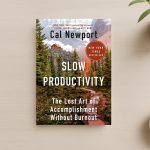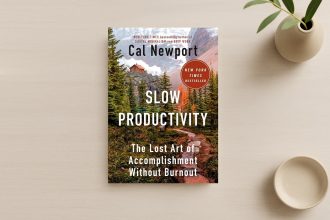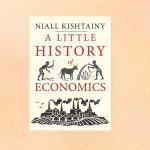Natural Experiments of History by Jared Diamond and James A. Robinson presents eight compelling case studies demonstrating how comparative methods can unveil the causes and effects behind major historical outcomes. Spanning diverse eras, geographies, and disciplines, the book integrates narrative richness with quantitative rigor, offering models for isolating variables in complex human societies. From Polynesian state formation to the lasting impacts of Africa’s slave trades, each chapter provides fresh insights into environmental, institutional, and cultural dynamics. Designed for students, scholars, and curious readers, it bridges history and social science to show how evidence-based comparisons can deepen our understanding of the past.
1. Introduction to The Natural Experiments of History
Natural Experiments of History is a collaborative work by Jared Diamond and James A. Robinson that demonstrates how comparative analysis can illuminate the causes and consequences of historical developments. The book explores the use of “natural experiments” – comparisons between societies, environments, and time periods where certain factors vary while others remain constant – to identify how specific variables influence historical outcomes.
The premise is rooted in an important scientific limitation: in history, unlike in laboratory science, researchers cannot manipulate the past. Instead, they must find real-world contexts where variation in conditions mirrors controlled experimentation. Diamond and Robinson assemble eight case studies by leading scholars from disciplines such as archaeology, political science, economic history, and geography, each exemplifying a rigorous comparative method.
These chapters reveal patterns and causal mechanisms for phenomena ranging from political stability to economic development to environmental sustainability. The authors aim to bridge the methodological gap between history and the social sciences, making the book as relevant to undergraduate students as it is to seasoned researchers.
2. Author Biographies
Jared Diamond
A professor of geography at UCLA, Diamond is internationally recognized for synthesizing insights from biology, anthropology, and history in works such as Guns, Germs, and Steel and Collapse.
– Academic Roots: Trained in physiology, Diamond shifted into evolutionary biology and historical geography.
– Research Focus: Origins and spread of human societies, the role of environment in shaping civilization, ecological sustainability.
– Approach: Integrates data from multiple disciplines to build explanatory models of cultural and societal change.
James A. Robinson
A political scientist and economist, Robinson has held academic positions at Harvard University and the University of Chicago.
– Research Focus: Political institutions, development economics, and comparative political systems.
– Notable Work: Why Nations Fail (co-authored with Daron Acemoglu), a major study on how institutions shape prosperity.
– Approach: Uses empirical and historical data to examine long-run political and economic trajectories.
Together, Diamond and Robinson leverage their interdisciplinary expertise to curate examples showing the explanatory strength of comparative methods.
3. Concept of Natural Experiments
Natural experiments involve comparing systems that are similar in most respects but differ in one or a few critical variables. That difference – occurring “naturally” rather than via researcher intervention – can reveal the impact of those variables on outcomes.
Key Elements:
– Similarity: Ensure the societies or contexts share many features so variations can be isolated.
– Controlled Differences: Identify factor(s) of interest that vary (e.g., political institutions, ecological conditions).
– Replication: Compare multiple instances to confirm repeatable patterns.
– Quantitative and Qualitative Integration: Combine narrative history with statistical analysis for robust conclusions.
Advantages:
– They bypass ethical and practical limitations of experimental manipulation in human history.
– They allow for statistical testing of hypotheses at scale.
Challenges:
– Risk of overlooked confounding variables.
– Difficulty ensuring factors are truly causal rather than correlated.
4. Main Themes Explored
4.1 Bridging History and Social Sciences
One of Diamond and Robinson’s goals is to normalize quantitative and comparative methods in historical research. Several chapters emphasize careful statistical treatment alongside traditional narratives, challenging the reluctance some historians have toward numerics.
4.2 Scope of Comparisons
Case studies range from single-island comparisons to analyses covering hundreds of regions. Geographic diversity includes:
– Pacific Islands
– American West and other “frontier” contexts
– Latin American and North American banking systems
– African slave trade zones
– Colonial India
– Spread of political revolutions in Europe
4.3 Diversity in Time Frames
The book examines:
– Pre-literate societies reconstructed through archaeology.
– Literate societies with rich archival material.
– Contemporary events with direct statistical datasets.
4.4 Methodological Spectrum
– Non-quantitative narratives rooted in ethnographic and documentary sources.
– Statistical studies processing large datasets to establish predictive relationships.
5. Chapter-by-Chapter Synthesis
Prologue: Why Comparative Methods Matter
Diamond and Robinson outline the rationale for natural experiments in history using examples from epidemiology and ecology. They address skepticism among historians and highlight the universality of comparative reasoning across sciences. The prologue sets expectations: some chapters will rely purely on narrative while others will be firmly statistical.
Chapter 1 – Controlled Comparison and Polynesian Cultural Evolution
By Patrick V. Kirch
Kirch examines the variation in political and economic complexity among Polynesian societies – Mangaia (small chiefdom), Marquesas (multiple warring chiefdoms), and Hawai‘i (archaic states).
– Factors: Island size, resources, and population density.
– Method: Linguistic, archaeological, and ethnographic triangulation.
– Conclusion: Environmental capacity strongly correlates with sociopolitical complexity, suggesting a feedback loop between resource abundance and political centralization.
Chapter 2 – Exploding Wests: Boom and Bust in Nineteenth-Century Settler Societies
By James Belich
Comparing seven frontier regions (US, Canada, Australia, New Zealand, South Africa, Argentina, Siberia), Belich identifies a recurring three-phase cycle:
- Explosive population and economic growth (import boom).
- Collapse or stagnation (bust).
- Recovery via export-oriented economic restructuring.
– Finding: Despite linguistic, cultural, and industrial differences, frontier societies displayed convergent evolution in growth dynamics.
Chapter 3 – Politics, Banking, and Economic Development: Evidence from New World Economies
By Stephen Haber
Haber contrasts 19th-century US, Mexico, and Brazil in their banking sector development.
– Independent starts with no chartered banks.
– Divergence in political institutions led to vastly different credit accessibility.
– Conclusion: Political inclusiveness drives banking expansion, which in turn supports democratic and economic growth.
Chapter 4 – Intra-Island and Inter-Island Comparisons
By Jared Diamond
Diamond studies environmental and societal differences between neighboring islands sharing similar cultural origins. In some cases, divergent ecological constraints led one island toward sustainable resource use while another faced depletion.
– Emphasis: Physical geography and resource endowment shape long-term societal fates.
Chapter 5 – Shackled to the Past: The Causes and Consequences of Africa’s Slave Trades
By Nathan Nunn
Quantitative analysis shows a persistent correlation between regions heavily affected by historical slave trades and lower current economic performance.
– Mechanisms: Destruction of institutions, erosion of trust, depopulation.
– Value: Demonstrates long-lasting impacts of traumatic historical events.
Chapter 6 – Colonial Land Tenure, Electoral Competition, and Public Goods in India
By Abhijit Banerjee and Lakshmi Iyer
Comparing Indian districts with landlord-based systems vs. peasant proprietorship under British colonial rule, the study finds land tenure patterns affect political competition and public goods provision to this day.
– Landlord areas: Lower investment in infrastructure and education.
– Lesson: Historical land policies embed inequalities across centuries.
Chapter 7 – From Ancien Régime to Capitalism: The Spread of the French Revolution as a Natural Experiment
By Daron Acemoglu, Davide Cantoni, Simon Johnson, and James A. Robinson
Investigates variations in revolutionary reform adoption across European regions.
– Regions directly occupied by French armies implemented reforms quicker.
– Outcomes: Faster industrialization, more egalitarian institutions.
– Controlled comparisons separate the effects of French occupation from other contemporaneous factors.
Afterword: Using Comparative Methods in Studies of Human History
Diamond and Robinson summarize methodological lessons:
– Tailor comparison scale to research question.
– Integrate multiple data sources.
– Remain alert to confounding influences.
– Respect disciplinary diversity while promoting cross-field collaboration.
6. Cross-Cutting Insights from the Case Studies
Institutional Path Dependence
Historical events and initial conditions can lock societies into trajectories that persist for centuries, evidenced in Africa’s slave trade legacy and colonial India’s land tenure.
Environmental Determinism and Opportunity
Physical geography exerts powerful constraints but also opens pathways for development – as seen in Polynesian evolution and island sustainability comparisons.
Convergent Evolution in Human Societies
Different cultures adopting similar solutions to comparable challenges (frontier growth cycles) highlight universal human economic dynamics.
Political Inclusiveness
Multiple studies reinforce that inclusive institutions foster broad-based economic growth and resilience.
7. Methodological Contributions
The Natural Experiments of History encourages historians to:
– Move beyond single-narrative case studies to comparative frameworks.
– Use quantitative methods without abandoning qualitative depth.
– Select cases to minimize extraneous variation and isolate causal factors.
Statistical rigor is balanced with contextual nuance to avoid misinterpretation.
8. Contemporary Relevance
Applying natural experiments to modern policy analysis can:
– Illuminate impacts of institutional reform.
– Provide historical analogues for environmental challenges.
– Help anticipate long-term consequences of current decisions.
The approach can inform fields as diverse as economic development, political reform, and sustainability planning.
9. Conclusion: Natural Experiments of History
Natural Experiments of History makes a strong case for viewing history through the lens of comparative science. Diamond and Robinson curate research that not only answers specific historical questions but also models how such questions should be asked.
From variations in Polynesian state formation to the spread of revolutionary ideas in Europe, each study demonstrates that robust comparative methodology can yield insights unattainable through single-case narratives. The book’s interdisciplinary nature signals a future in which historians, political scientists, economists, and geographers work in methodological harmony to decode the complexities of the human past.
If you found this summary helpful, please share it or leave a comment below.



















